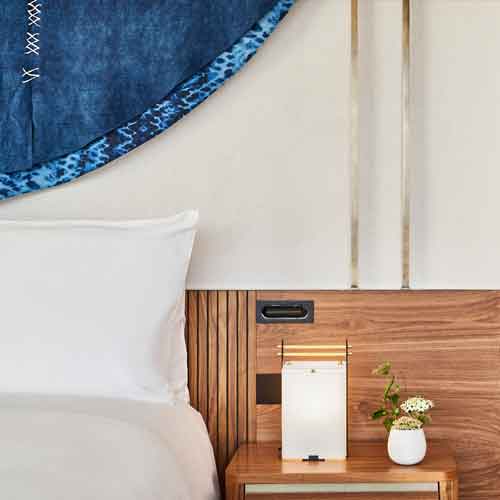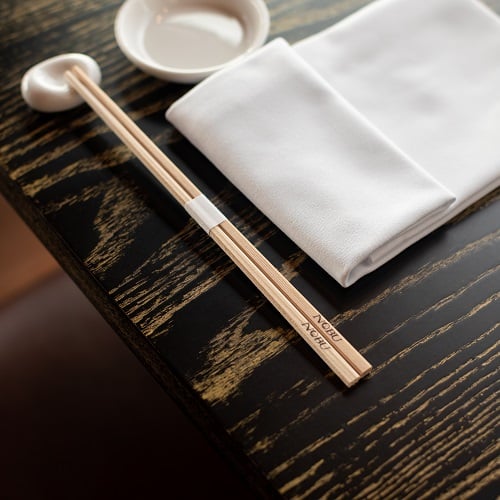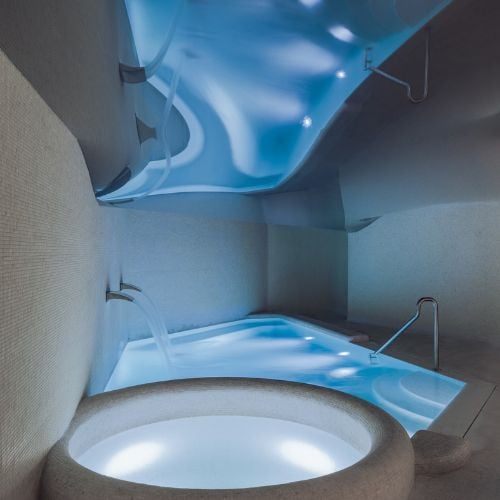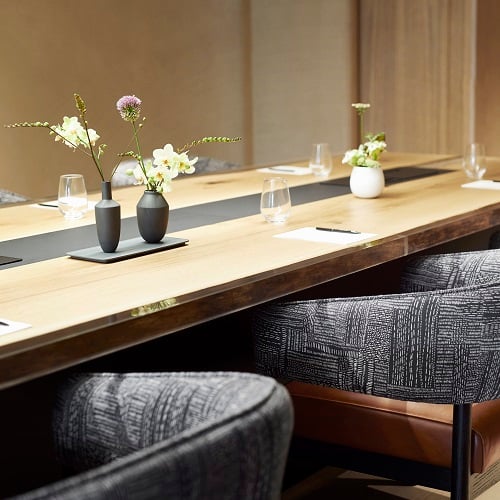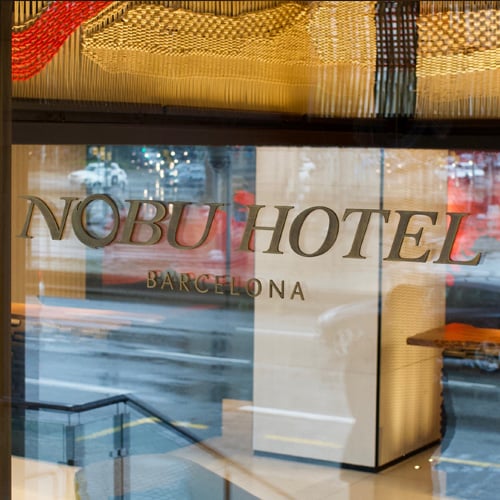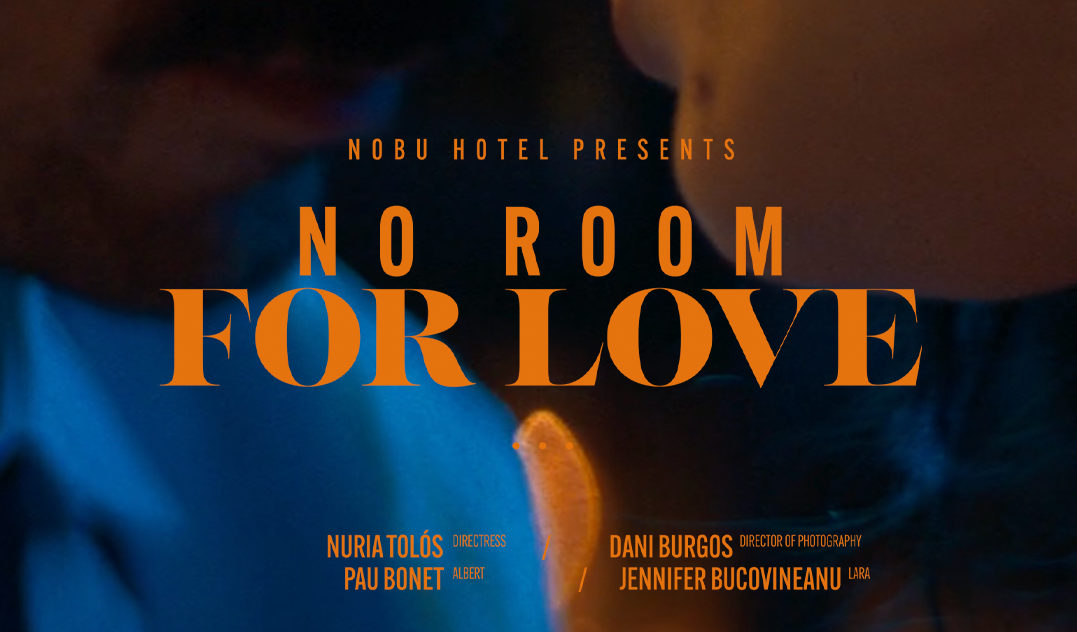24h of Architecture: Discovering Barcelona’s Architecture
![24H_ARCHITECTURE[1] Arquitectura barcelona](https://barcelona.nobuhotels.com/wp-content/uploads/2024/04/24H_ARCHITECTURE1.png)
24h of Architecture:
A Walk through Architectural Barcelona
Barcelona is more than Gaudí and the Gothic Quarter. Here’s how to spend 24 hours filled with the best of Barcelona architecture.
10am: Just a five minute stroll from the hotel we arrive at Plaça Espanya with the Spanish Moorish Revival style former bullring Las Arenas, restored by Richard Rogers, and the gateway to Montjuïc. After marveling at the majestic Palau Nacional head to the Barcelona Pavilion, a Modern Movement emblem designed by Mies Van der Rohe and Lilly Reich. Further up Montjuïc hill, around the Olympic sites, Calatrava’s Olympic flame telecommunication tower rises from the landscape and reminds us of the importance of the games in Barcelona’s recent past.
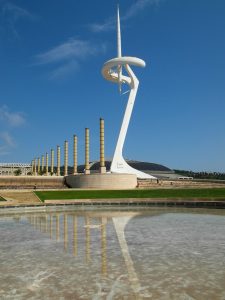
Autor: Vicente Zambrano González
12pm: Head into the center of town for two buildings that couldn’t be more different in style. The MACBA art gallery, designed by Richard Meier, is a clean, contemporary building in the middle of gritty Raval. Conceived as an assemblage of several prisms, the gallery is flooded with natural light which softens its rationalist hard edges. Across the Gothic Quarter and heading towards El Born a burst of colour and nature springs from the Palau de la Música Catalana. A modernist landmark designed by Lluís Domènech i Montaner, the concert hall is now a UNESCO world heritage site and opulent inside and out. Get a glimpse of the stunning stained-glass skylight in a guided tour, or better still, at a concert.
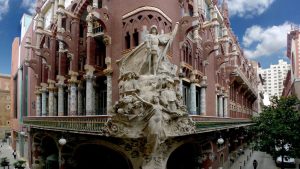
Autor: Vicente Zambrano González
2pm: Stop for lunch in The Green Spot, a vegetarian restaurant that aims to be for veggies and non-veggies alike. Housed in a once abandoned building the restaurant has been almost carved out of the existing structure and uses glazed Catalan earthenware tiles and European walnut paneling to give it a true sense of place.
4pm: Leaving the old centre of the city behind we head towards Poblenou – once Barcelona’s industrial hub and now transformed into contemporary offices and creative workspaces. Plaça de les Glòries has undergone a dramatic transformation over the past few decades and the skyline is now dominated by Jean Nouvel’s Agbar Tower – Barcelona’s answer to the Gherkin – and the Design Museum, housed in a building affectionally known to the locals as ‘the stapler’. On the same square the Barcelona flea market, Les Encants, which has been trading for over 700 years was transformed by architects b720 removing architectural barriers and creating a spectacular mirrored roof, interacting with the square as the market has done for hundreds of years.
6pm: From striking modernism to a hospital that was strikingly ahead of its time. Hospital Sant Pau – sat just behind the Sagrada Familia – was built in the early 20th century to replace the city’s hospital in Raval where it had been since the 13th century. This new hospital, designed by Lluís Domènech i Montaner who also created the Palau de la Mùsica Catalana, centred on the cutting edge thinking of the time including separate wards for different diseases and the importance of fresh air and nature in the healing process. The hospital was a working space until 2009 and has now been painstakingly restored to its original state. The guided tours are well worth a visit.
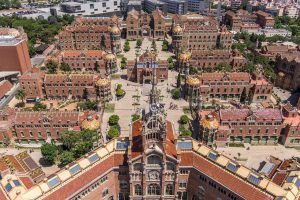
Autor: AL PHT Air Picture TAVISA
8pm: In the city of Gaudí, Modernism and gourmets, where better for dinner than La Dama? Housed in Casa Sayrach, a modernist building built in 1918, this elegant bistrot serves up traditional French and Catalan fare in a classically Barcelona setting.
10pm: It’s nightcap time, and where better than on our rooftop with stunning views over the puzzle of modernism, gothic and contemporary architecture that is the Barcelona skyline




